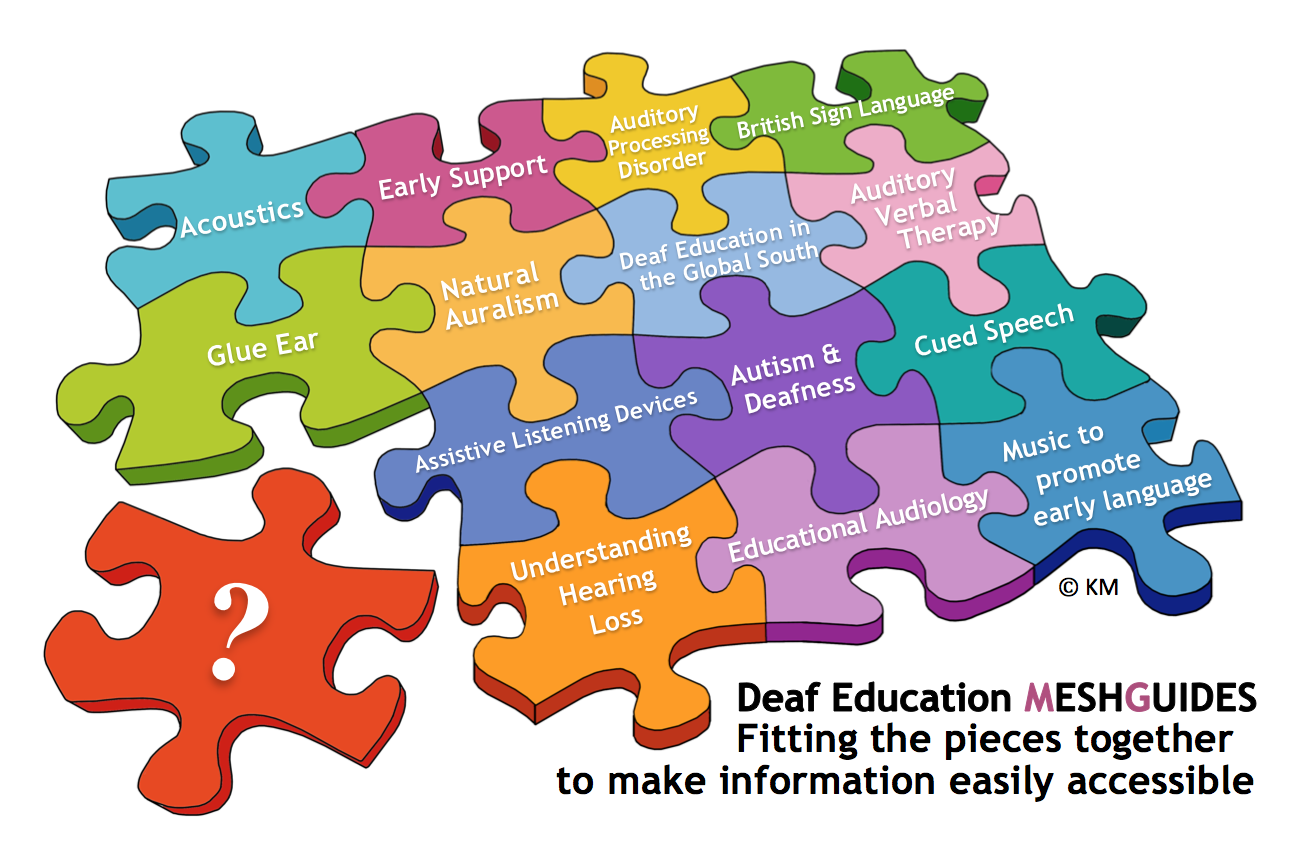Assistive Listening Devices (ALDs) - radio aids and proprietary remote microphone systems – optimising listening opportunities
This MESHGuide has been designed to cover a wide range of issues associated with Assistive Listening Devices (ALD) – radio aids and proprietary remote microphone systems. It is a resource for anyone who works with children and young people (CYP) who are deaf who may benefit from Assistive Listening Devices (ALD) – radio aids and proprietary remote microphone systems. This would include parents, mainstream education settings, specialist education setting teachers and professionals in the field of deafness. It focuses specifically on personal remote microphone technology as an access tool for deaf CYP, and the issues regarding their use. Please note these devices are also referenced as helpful technology for CYP with auditory processing disorder (further information available via the MESHGuide for APD).
The principles supporting the use of Assistive Listening Devices (ALD) – radio aids and proprietary remote microphone systems for deaf CYP remain constant; however, the manufacturers are committed to developing and improving each device. The technical advances in remote microphone technology enable deaf CYP, their families, and staff in educational settings, to develop the use of Assistive Listening Devices (ALD) – radio aids and proprietary remote microphone systems to maximum advantage.
It aims to be an unbiased source of the latest thinking and research and present relevant case studies on the use of remote microphone technology. It covers what Assistive Listening Devices (ALD) – radio aids and proprietary remote microphone systems are, why and how they are used; connection to other technologies; the various types and makes available, with links to manufacturers and other websites.
Assistive Listening Devices (ALD) – radio aids and proprietary remote microphone systems
“Radio aids are known by several different terms, including remote microphones (RM) or transmitters, which are umbrella terms for devices that either use a receiver to connect to the transmitter or pair via Bluetooth. Often, radio aids are now referred to as assistive listening devices (ALDs) or assistive listening technologies (ALTs)”.
“The range of options available and the rapid advancements of hearing technology can make the selection process overwhelming for both professionals and families. The wireless options available can be categorised into two types:
- Universal: Universal options of ALT refer to technology or connectivity options that connect to any hearing technology and are not restricted to specific manufacturers’ models however the only current example of this are inductive loop systems which are increasingly restricted to a few ALD models due to reduction in size and increasing electronic complexity of ALDs. A new system: Bluetooth Auracast was released in December 2023 and will slowly propagate through the mobile phone-TV-Radio- public space areas (please see Auracast section)
- Proprietary: these refer to manufacturer-specific technologies that only work with specific models of primary hearing technologies; or a limited range; the opposite of universal connectivity. Most manufacturers now have these devices including Cochlear, Starkey, GNResound, Oticon and the Phonak Roger system”
(Whyte, S. 2024 Audiology refreshers section 6.4)
Assistive listening technologies (ALTs) are widely used by CYP for developing spoken language, accessing live and recorded voice, in the home and in education, and reducing the listening fatigue experienced when listening in noise. They are also used by deaf adults in professional, social and personal environments. ALTs overcome many of the challenges present in difficult listening situations and help provide deaf individuals with access to speech and sound in a range of environments.
The introduction of AI and mobile phone apps has greatly improved the user experience giving the user the ability to generate personal programs for different scenarios.
The original creation of this MeshGuide has been led by Gill Weston, Cate Statham, Helen Maiden and Pauline Cobbold, all who are (or have been) practising Educational Audiologists and/or Qualified Teachers of Deaf Children and Young People (QToDs). The revision version has been created by members of the Assistive Listening Technology Working Group (ALTWG). They have a wealth of knowledge and been involved with research, setting up ALTs in homes and schools for children with hearing aids, cochlear implants, bone conduction hearing devices and working closely with the manufacturers to solve any problems that have arisen.
ALT is also used by individuals with Auditory Processing Disorders (APD)/listening in noise difficulties. See the APD MESHGuide for information specific to APD.
Disclaimer - the authors have attempted to gather varied examples of research and articles and case studies and are not endorsing a specific viewpoint.
This guide is one in a series of Deaf Education MESHGuides.


